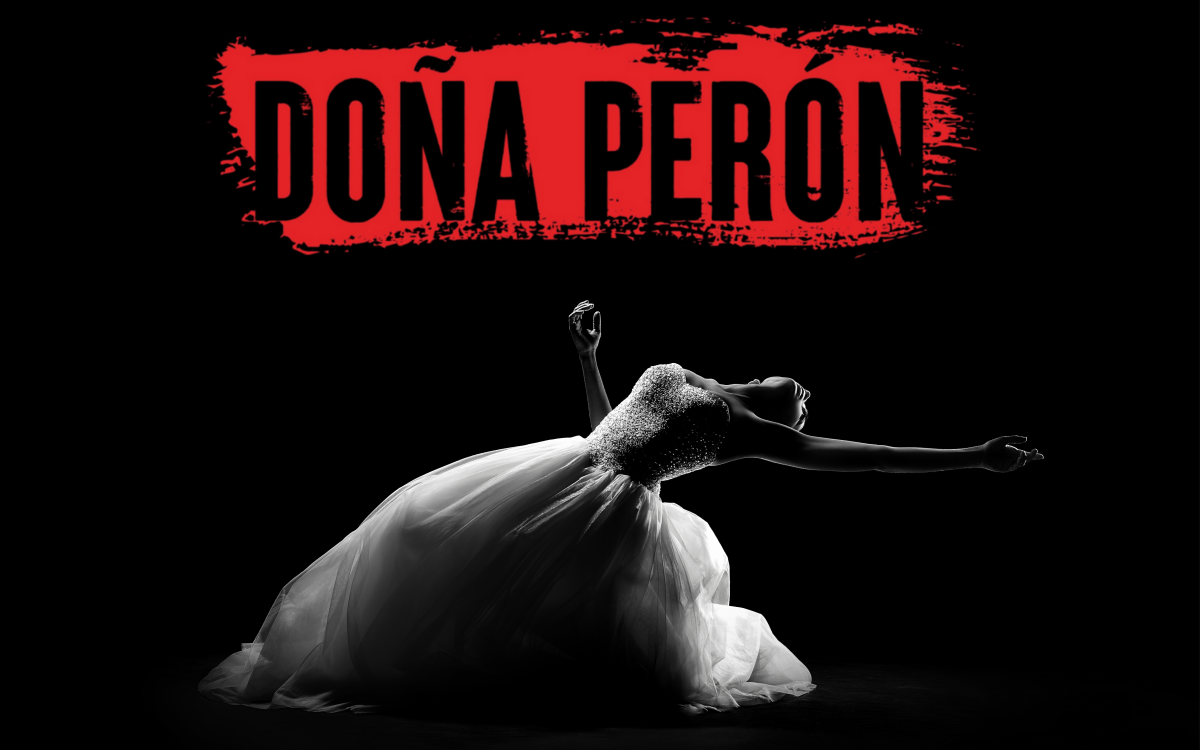Review | Ballet Hispánico’s ‘Doña Perón,’ Presented by UC Santa Barbara Arts & Lectures
Eva Perón’s Historical Story Is Poignant and Relevant in This Modern Era

With Doña Perón, New York–based Ballet Hispánico proves that even if a story has already been told, there may still be another point of view. Choreographer Annabelle Lopez Ochoa, in her first evening-length commissioned work for Ballet Hispánico, has created a masterwork that considers a fascinating figure with a complicated legacy.
Endeavoring to tell Evita’s story in a concise 72 minutes, Ochoa’s most remarkable skill may be in her ability to use abstraction as the tool to pull at the threads of Evita to ask more questions than she answers about the iconic Latina. The movement is lush and expressive and shows Ochoa’s attention to detail; the patterns of gestural movement, paired with swirling tango-inspired pas de deux, did not rely on what may be recognizable as contemporary dance clichés but instead drew from a rich, meaningful connection to cultural dance forms and music. Ochoa’s choreography turns the trembling of a hand or a stumble into a decisive storytelling moment, and the Ballet Hispánico dancers effortlessly embodied those moments.
The dancer portraying Evita, Amanda del Valle, was unquestionably the highlight of the evening. She deftly handled the technical versatility required to perform Ochoa’s demanding choreography, the dramatic narrative moments, and the nearly nonstop costume changes that denoted the various periods of Evita’s life. Another standout was Gabrielle Sprauve, a member of the ensemble for this production, who exudes strength, versatility, and grace in movements that underscored the hybrid nature of contemporary choreography and the demands it puts on dancers to be fluid and flexible one moment and fierce and unyielding the next.
The production design by Christopher Ash seamlessly shifted and changed as part of a cohesive storytelling whole. The set and production elements eschewed complicated set pieces in favor of long drapery hung around the edges of the danceable space of the stage and the constant movement of small greyscale boxes as both set and choreographic pieces. Beautifully designed lighting and scenic elements flew in throughout the performance to create bright ballrooms, balmy dancehalls, cold jail cells, and public squares. Ash’s projections featured most often in the more dramatic moments where Evita’s illness — which eventually takes her life — interrupted, otherwise affecting dance sequences.
Artistic Director Eduardo Vilaro noted in a pre-show discussion with students at UC Santa Barbara that color was critical to how costume designer Mark Eric defined Evita’s evolution from her early life on the fringes to her role as Argentina’s First Lady. Evita’s younger self, danced by Pa’lante Scholar Laura Perich, wore a youthful yellow shift dress, bringing to mind the schoolgirl’s uniform. Later, the older Evita wore a darker golden gown as the First Lady of Argentina. The recurring duets between the older and younger Evitas changed throughout the show as the older Evita stepped out of time to reflect on her earlier traumas as an illegitimate daughter of a prosperous farmer and then her years as a dancehall performer. As Evita, del Valle stepped gracefully in and out of many costumes throughout the evening onstage and amid Ochoa’s complex choreography — with only one stumble.
Peter Salem’s score, performed by just five musicians, brought the narrative elements of the piece together. The blend of stomping, clapping, shouted phrases, and radio static broke up the constant Latin rhythm and sounds and magnified the raw emotions of the dancers, led by del Valle with yells of “Che!” as she embodied Evita’s physical struggle amid her pain. Near the end of the work, the grounded unison phrases of the ensemble echo the beginnings of the work, brought Eva Perón’s story full circle.
While it is difficult to walk away from Doña Perón without some admiration for its protagonist, Ochoa — and the dancers of Ballet Hispánico — successfully emphasized Evita’s nature as a controversial figure whose personal and political choices continue to define her legacy and memory. This is a poignant and relevant piece for a modern era where all our personal and political decisions define our presence in an ever-changing world. As a company that has been around for half a century, Ballet Hispánico shows that reexamining and learning from the past allows us to craft new futures we can be proud of.



